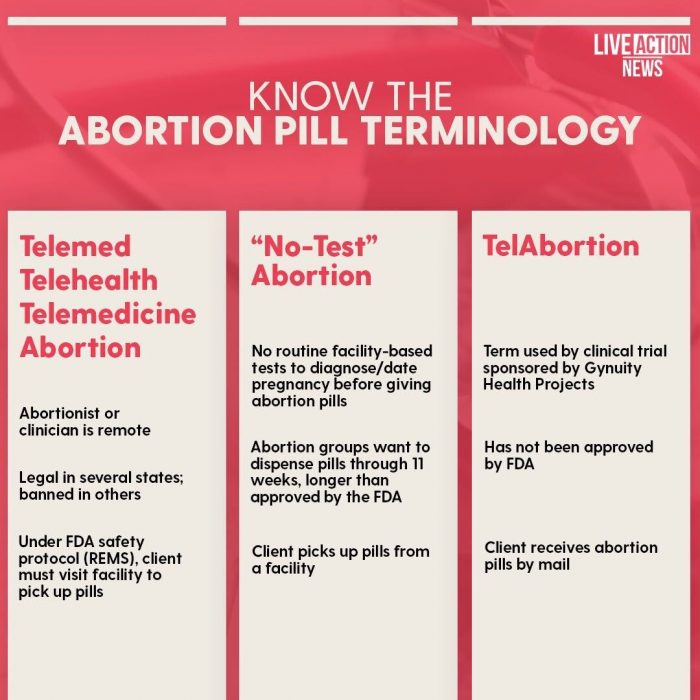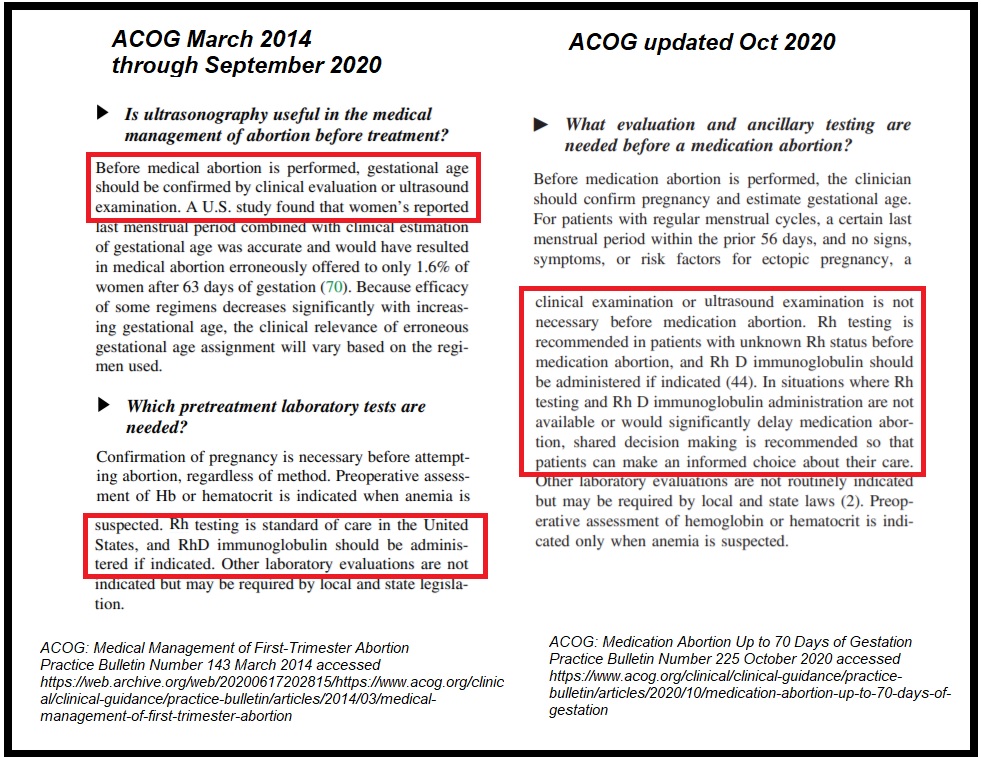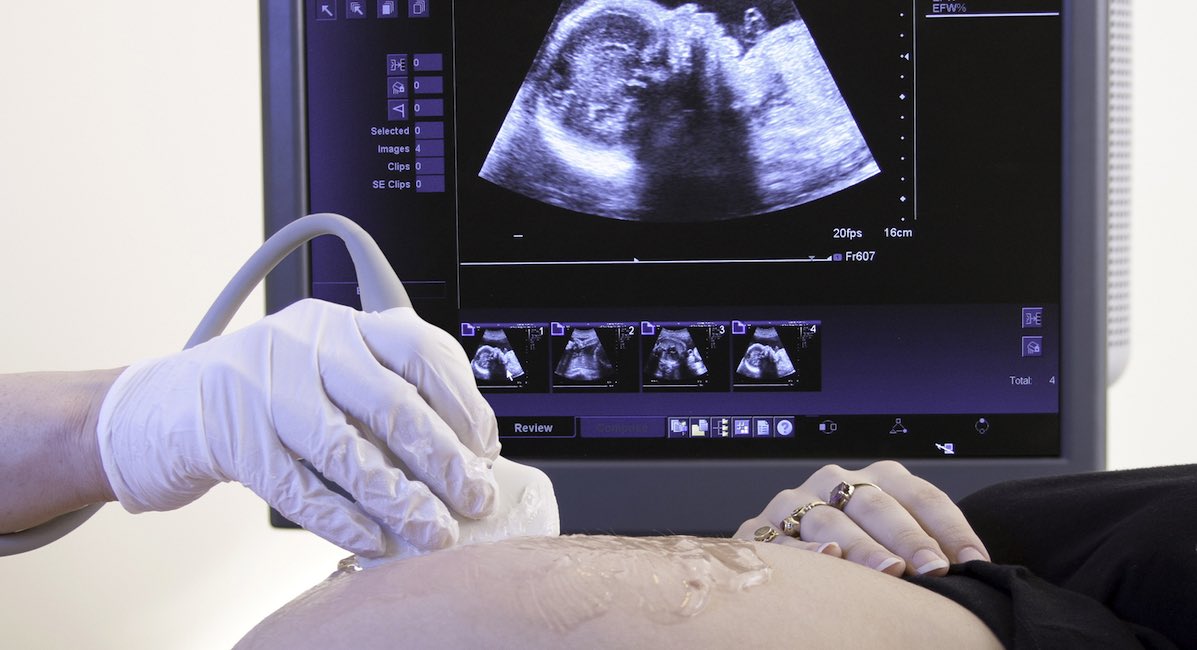Last year, abortion industry insiders rolled out a “no-test” abortion pill protocol. Rather non-coincidentally, around the same time frame, The American College of Obstetricians and Gynecologists (ACOG) updated its abortion “practice bulletin” to no longer recommend the use of ultrasound to rule out the possibility of a deadly ectopic pregnancy when prescribing the abortion pill. In other words, the ACOG changed its recommendations to line up exactly with the abortion industry’s attempts to expand access to the abortion pill.
With a no-test protocol, abortion workers simply believe the abortion client’s best guess at the time of her last menstrual period to determine gestational age, relying on her assumed knowledge of ectopic pregnancy risks as well as blood type and Rh factor — a dangerous lack of testing which could impact her health and her future pregnancies. Eliminating these tests does nothing to protect women. The object of the protocol is simply increased access, which adds to the abortion industry’s profits. Live Action News previously estimated that the abortion industry is grossing nearly $200 million annually in abortion pill sales — twice as much money as initially projected — with Planned Parenthood alone taking in approximately half of the sales.

Abortion Pill Terminology
Though many believe the ACOG is an impartial medical organization, it is actually radically pro-abortion and has been funded by Ibis Reproductive Health which received funds directly from U.S. abortion pill manufacturer Danco Laboratories and is currently funded by Danco investor, the David and Lucile Packard Foundation. (After Live Action News exposed the ACOG’s financial conflicts of interest, the funding connections were suddenly scrubbed from Ibis’s website.) The ACOG has funded the Bixby Center for Global Reproductive Health, where abortionists are trained.
In 2018, the ACOG received $1.4 million from the Buffett Foundation, and has received hundreds of thousands from the foundation every year for the past several years. Unsurprisingly, Buffett was also one of the first investors in Danco.
Until last year, the ACOG recommended an ultrasound before the abortion pill
ACOG’s March 2014 Practice Bulletin #143, “Medical Management of First-Trimester Abortion,” was in place until last year and recommended ultrasound.
It stated, “Before medical abortion is performed, gestational age should be confirmed by clinical evaluation or ultrasound examination” (emphasis added). At that same time, the ACOG also noted, “Rh testing is standard of care in the United States, and RhD immunoglobulin should be administered if indicated.”

ACOG medication abortion guidelines March 2014 comparison with Oct 2020 for abortion pill
The ACOG’s updated October 2020 Practice Bulletin #225, “Medication Abortion Up to 70 Days of Gestation,” clearly warns that “[m]edication abortion is not recommended for patients with any of the following: confirmed or suspected ectopic pregnancy…” and states, “A potential concern when providing early abortion services is the possibility of an undiagnosed ectopic pregnancy.”
Yet, rather than recommending that the abortion business rule out a deadly ectopic pregnancy by use of ultrasound, the pro-abortion group now recommends that if there are no “risk factors for ectopic pregnancy,” ultrasound confirmation is not necessary.
Before medication abortion is performed, the clinician should confirm pregnancy and estimate gestational age. For patients with regular menstrual cycles, a certain last menstrual period within the prior 56 days, and no signs, symptoms, or risk factors for ectopic pregnancy, a clinical examination or ultrasound examination is not necessary before medication abortion.
According to the ACOG, a “risk factor” for an ectopic pregnancy includes:
- Previous ectopic pregnancy
- Prior fallopian tube surgery
- Previous pelvic or abdominal surgery
- Certain sexually transmitted infections (STIs)
- Pelvic inflammatory disease
- Endometriosis
The likelihood that a teen girl experiencing her first pregnancy will know whether she is at risk is basically zero.
According to the ACOG, in 2017, it was estimated that “60% of abortions in the United States occurred at or before 10 weeks of gestation” and 39% of those were done by abortion pill. The Guttmacher Institute noted that in 2017, there were 339,640 chemical abortions (the abortion pill) out of 862,320 total abortions reported. Yet some abortion pill attempts will fail, often leading to additional abortion drugs or a surgical abortion procedure.
Interestingly, one way the ACOG says an “ongoing pregnancy” can be identified after a failed chemical abortion is the existence of “gestational cardiac activity” — the heartbeat of the preborn child.
The ACOG’s magically low ectopic pregnancy numbers for abortion pill patients
According to the ACOG’s 2020 bulletin, “The overall ectopic pregnancy rate in the U.S. general population is… approximately 6 per 1,000 pregnancies among insured patients and 14 per 1,000 among patients who receive Medicaid.” According to Guttmacher, “Medicaid was the second most common national payment method (used by 24% of patients).”
Yet the ACOG claims that abortion patients somehow magically demonstrate a lower ectopic pregnancy rate than the national average:
However, in studies of patients who seek abortion, ectopic pregnancy rates generally are lower. A U.S. study of uterine evacuation procedures performed at less than 6 weeks of gestation found the ectopic pregnancy rate to be 5.9 per 1,000 pregnancies at a time when the national rate was three times higher.
The largest published study of first-trimester medication abortion patients involved 16,369 patients with pregnancies of 49 days of gestation or less and yielded a calculated ectopic pregnancy rate of 1.3 per 1,000 pregnancies.
Ironically, both studies cited by ACOG were published well before the U.S. had even approved the abortion pill — in 1997 and 1992.
Who reports complications?
Under the U.S. Food and Drug Administration’s REMS safety system, the requirement to report abortion pill complications lies solely with abortion pill manufacturer Danco Laboratories and generic abortion pill manufacturer GenBioPro.
Women experiencing abortion pill complications may not always return to the facility that sold them the drugs. A recent analysis of adverse events reports submitted to the FDA revealed that abortion pill clients experiencing complications are more likely to present to emergency rooms for care than to the abortion facilities where they obtained the pills.
These findings are another indication that complications such as an undiagnosed ectopic pregnancy could likely go unreported, since there is no federal mandate to report abortion-related complications across all 50 states.
“Like” Live Action News on Facebook for more pro-life news and commentary!







